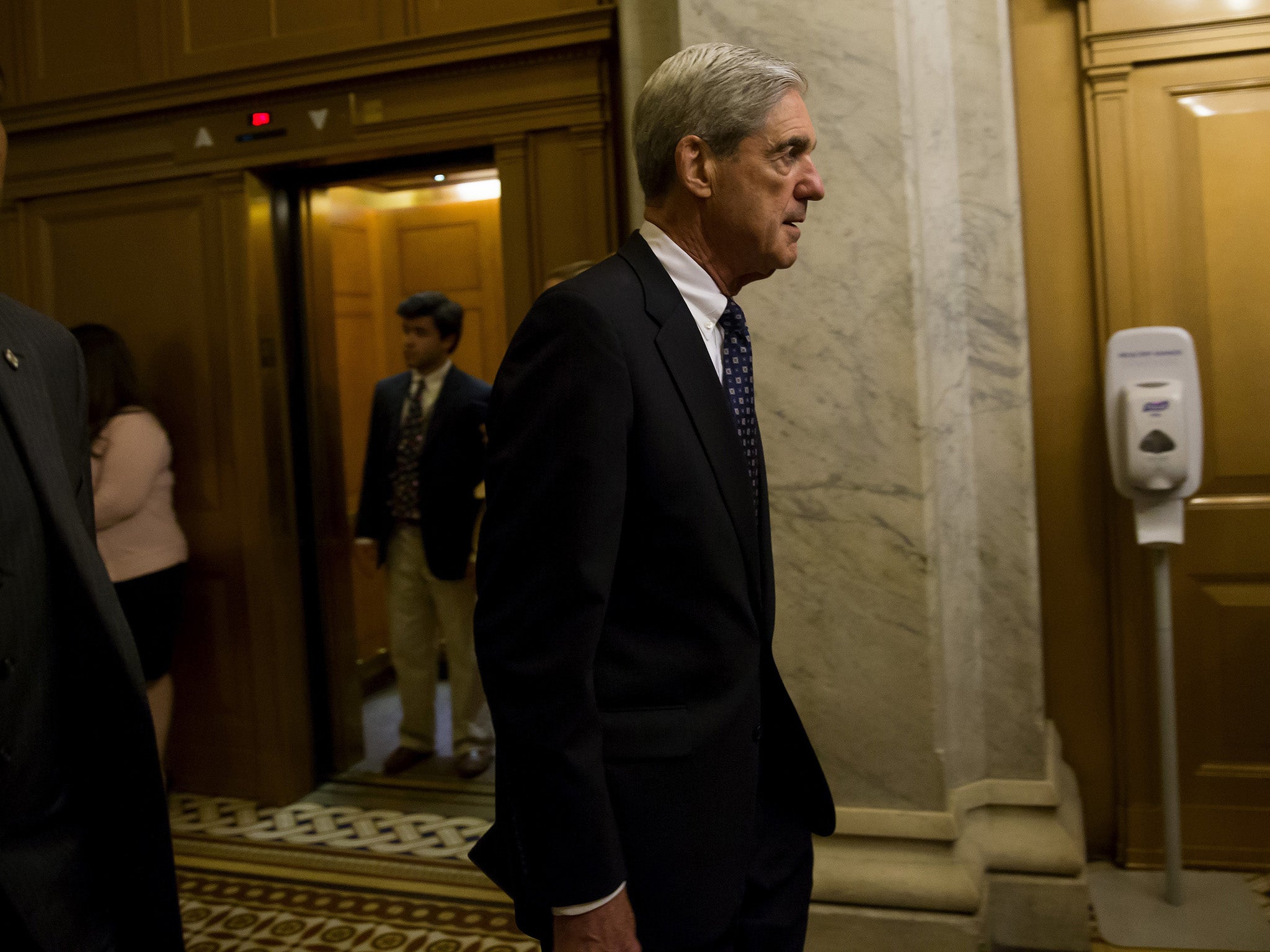Robert Mueller: Previously sealed Watergate report released as guide for US special counsel
'It’s absolutely an approach he could take – simply giving them the facts, without coming to a conclusion'

US archivists revealed one of the last great secrets of the Watergate investigation on Wednesday – the backbone of a long sealed report used by prosecutor Leon Jaworski to send Congress the evidence in the legal case against president Richard Nixon.
The release of the referral, delivered in 1974 as impeachment proceedings were being weighed, came after a former member of Nixon’s defence team and three prominent legal analysts filed separate lawsuits seeking its unsealing after more than four decades under grand jury secrecy rules.
The legal analysts argued the report could offer a precedent and guide for special counsel Robert Mueller as his office addresses its present-day challenge on whether, and if so how, to make public findings from its investigation into Russian interference in the 2016 election, including any that directly involve Donald Trump.
The legal specialists said they and Watergate veterans sought to have the Jaworski report made public because of the historic parallels they see to the current probe and the report’s potential to serve as a counterexample to the independent counsel Ken Starr’s report before president Bill Clinton’s impeachment.
The 453-page Starr report, written in 1998, deepened partisan divisions when its graphic detail and legal conclusions about Mr Clinton’s affair with Monica Lewinsky were immediately made public by House Republicans, who suffered an electoral backlash.
By contrast, the reputation of Jaworski’s report has fared far better, even as its bare bones form remained a mystery. The Jaworski report is known colloquially known as the “Sirica road map", for then-chief US district judge John Sirica, who approved its creation and transmission to lawmakers.
“There were no comments, no interpretations and not a word or phrase of accusatory nature. The ‘road map’ was simply that – a series of guideposts if the House Judiciary Committee wished to follow them,” the late Jaworski wrote in his 1976 memoir, “The Right and the Power: The Prosecution of Watergate".
The House Judiciary Committee recommended Nixon be impeached in July of 1974. He resigned before that recommendation moved ahead.
On 11 October, Sirica’s modern-day successor, chief US district judge Beryl Howell of the district of Columbia, ordered the disclosure of Jaworski’s report by the National Archives and Records Administration – with limited redactions.
This was in response to petitions by California author and former Nixon deputy Watergate defence counsel Geoffrey Shepard, Brookings Institution senior fellow Benjamin Wittes, Jack Goldsmith, a Harvard law professor who led the Justice Department’s Office of Legal Counsel under president George W Bush and Stephen Bates, a Las Vegas professor who co-wrote the Starr report with now-Supreme Court Justice Brett Kavanaugh and other members of Starr’s team.
In a statement Deana El-Mallawany, counsel for Protect Democracy, which represented the Wittes group, said: “The road map is a critical historical precedent for ensuring that the facts uncovered in special counsel Mueller’s investigation become public and serve as the basis for whatever accountability is necessary. Our democracy depends on it.”
The road map consists of a two-page summary, followed by 53 numbered statements, supported by 97 documents including interviews and tapes, according to information that the National Archives turned over to Howell.
While much of the report’s substance – including evidence of the Nixon campaign’s funding of the break-in of Democratic National Committee headquarters and the president’s role in the subsequent coverup – has long been public, its structure and potential to serve as a template for others remained under seal.
Mr Bates said as a Starr prosecutor in 1997, he learned that despite the potential for the “road map” to present a legal model for future investigations, such as Mueller’s, it was not publicly available when he asked the National Archives for a copy to study.
“It is one of the only precedents of a report that has had to go through that kind of process [under grand jury secrecy rules] to get to the House for consideration as grounds for impeachment,” Mr Bates said in an interview.
“If Mueller could say, ‘we have structured this report the way Leon Jaworski did in 1974, and Judge Sirica approved it,’ that might be persuasive in this case.”
Jaworski faced a problem similar to one that may confront Mueller: he had relevant evidence but not, Jaworski concluded, the constitutional authority to indict a sitting president.
Congress had the authority to impeach Nixon, but not the evidence. In the end, the House committee sought access to evidence gathered by prosecutors, the grand jury adopted the road map, and Sirica and the US Circuit Court of Appeals of the District of Columbia authorised its transmittal under seal.
Mr Howell, the judge who ordered the road map’s release, is also overseeing the Mueller grand jury, and as chief judge, would decide any similar release request were one made for that grand jury material.
In her order, she directed archivists to disclose 81 of 97 supporting documents that have been made public elsewhere, and to review the rest for release.
Other veterans of past White House investigations differed on the road map’s lessons.
Paul Rosenzweig, who served on Starr’s team, said the document is important for historians, but that Justice Department regulations issued since then provide for Mr Mueller to report to his supervisor, currently deputy attorney general Rod Rosenstein.
Nick Akerman, who served as an assistant prosecutor on Jaworski’s team, said however it could provide a model for Mr Mueller, particularly should his team decide the president engaged in wrongdoing but that department regulations do not allow them to seek an indictment or make a case for impeachment.
“It’s absolutely an approach he could take – simply giving them the facts, without coming to a conclusion,” Mr Akerman said.
The Washington Post
Join our commenting forum
Join thought-provoking conversations, follow other Independent readers and see their replies
Comments